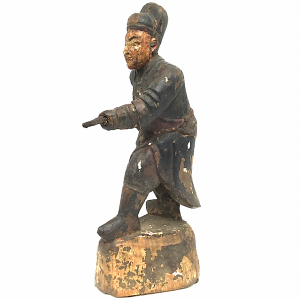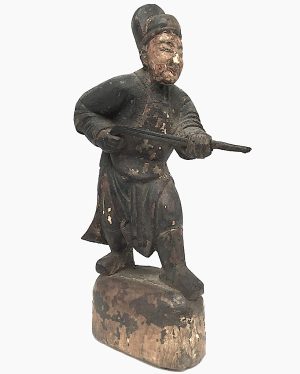Showing 13–15 of 15 results
-
Sale!


$315.00 Original price was: $315.00.$275.00Current price is: $275.00.
H: 9 ” W: 3.625″ D: 3.5 ” | FREE SHIPPING WITHIN CONTINENTAL U.S.!
This ancestor figure of a huntsman in the round is unique, standing on a domed pedestal, facing half right holding a flint lock, wearing a hunting coat, a two-level hat, traditional under- and outer-garment, and thick boots. As the noted scholar on Chinese wood carvings stated, a similar figure like this “unusual and extraordinary ancestral image of a huntsman with a flintlock gun, was the only ancestral image in his vast collection which “depicts the calling of the deceased.”
-
Sale!


$450.00 Original price was: $450.00.$395.00Current price is: $395.00.
Ht: 9″ W: 5″ D: 3.5″ | FREE SHIPPING WITHIN CONTINENTAL U.S.!
During the Ming and Qing dynasties small images of Taoist officials and priests were often shown holding a cup of the elixir of life to place on home altars along with ancestor figures, house gods and other religious images to bring blessings (fu) to the household. By commissioning figures like this artful carving, families honored their ancestors and met their filial piety duties. Mounted on an acrylic stand.
-


$675.00
The religion of the ethnic Dayak (Dyak) people of Kalimantan (Borneo), Indonesia is a mix of animism, shamanism and ancestor worship. Their word hudoq describes three different things: it describes the pests that can destroy the rice harvest on which their survival depends; the name of the huge yearly Dyak planting celebration and the name…
End of content
End of content






